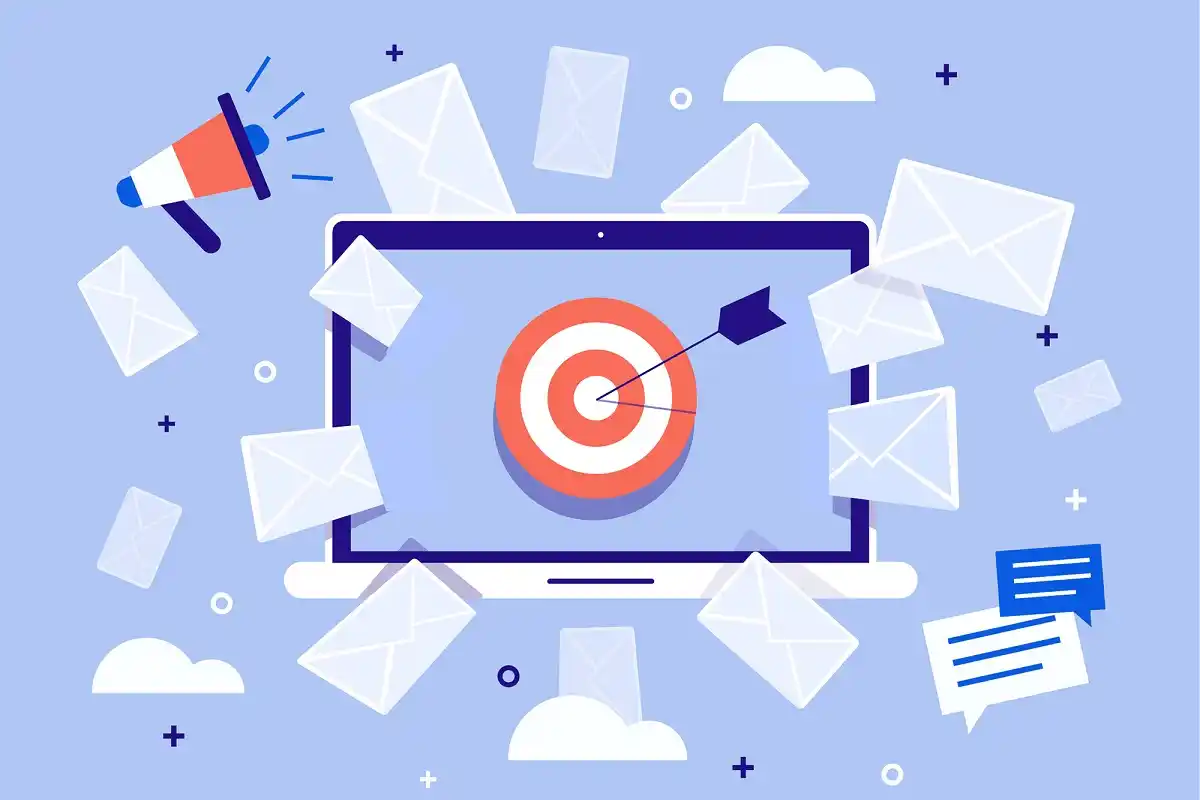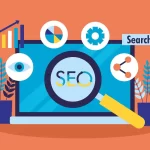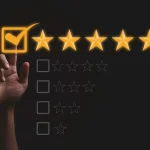Tech commentators love to declare with seemingly great confidence that email is on its last legs. But we’re willing to wager one look at your inbox is enough to prove “you’ve got mail.”
In fact, many small businesses are showing a renewed interest in email marketing as a way to reach their customers with relevant, personalized messages at the right time without needing permission from the internet’s increasingly restrictive gatekeepers.
Plus, email has seen consistently healthy growth in global users with no signs of slowing down.
Whether you’re just getting started with email marketing or dreaming up your next big campaign, our guide reveals what email campaigns work best and how to make the most of every broadcast.
Email Marketing
Email marketing is the practice of sending marketing messages to prospective and current customers via email in order to sell, educate, or build loyalty.
Email is an “owned” digital marketing channel that is, the sender fully controls the content and distribution and typically works best when used to send personal, relevant messages to segmented lists of recipients.
Email is an especially important tool in relation to eCommerce, where it’s used for sending transactional, promotional, and lifecycle messages (which we’ll cover in more detail below).
Key to eCommerce Success
The reality of website traffic, even highly targeted traffic, is most new visitors to your store will never return unless, that is, you do something to keep them coming back.
Building an email list and sending compelling broadcasts gives you a way to retain the traffic you worked so hard to earn by providing subscribers with an incentive to stay in touch.
If your online store hasn’t taken the time to adopt email marketing, you’re likely leaving money on the table. To prove it, here are four reasons to consider employing email in your marketing mix.
1. Customer Relationship
Search engines and social media platforms are great for getting discovered by future customers, but email remains the best way to maintain and strengthen existing relationships over time.
Email also plays a pivotal role in encouraging a customer’s second purchase and beyond. Having customers return is important for many businesses because it keeps their average cost of acquiring a customer down.
2. Sales
Of course, certain businesses (and products) pair especially well with email marketing, and returns are never guaranteed.
But over the years, similar research has painted the same picture: email is a high-performing channel that frequently outperforms the alternatives.
3. Three Main Growth Multipliers
There are only three ways to grow revenue: increase the total number of customers (C), increase the total number of purchases per customer (purchase frequency), or increase the average order value (AOV).
Most entrepreneurs pursuing an acquisition “silver bullet” usually end up disappointed and discover that acquiring customers can quickly get expensive. Email marketing offers a viable way out of the acquisition rat race because it can influence all three growth multipliers at the same time:
- Automated welcome and abandoned cart emails can increase conversion rates (C)
- Bounce back or win-back campaigns can increase a customer’s number of purchases (F)
- Lifecycle campaigns and broadcasts can automatically highlight high-value products to the right customers (AOV)
- Systematic focus on all three areas will further compound your results, and that’s one of the biggest reasons why it’s worth creating a deliberate email marketing strategy when growing an eCommerce business.
4. Third-party Gatekeepers
One aspect of email marketing that continues to grow in importance is that email isn’t subject to the whims of centralized platforms, where unplanned tweaks to algorithms can completely derail a distribution strategy.
In contrast, organic reach for Facebook pages has been declining since 2013, as the platform continues to focus its News Feed on promoting content from friends and family.
Similarly, climbing the search rankings in Google is only getting harder, with advertisements and answer boxes resulting in a noticeable increase in no-click searches, especially on mobile. More than ever, if you want to reach your customers on these platforms, you may be forced to pay—and those costs are increasing.
Getting Started With Email Marketing
Even the best email marketing strategy begins with choosing an email marketing service, establishing a plan to generate new subscribers, and understanding how to send emails legally.
Email Service Provider
The first step in getting started with email marketing is to choose email marketing software through which you’ll begin building your list.
There are many robust and cost-effective email marketing tools to choose from, so don’t get caught up trying to pick one that’s “perfect.” You can always switch providers down the line. Instead, pick a well-reviewed solution that fits your needs (e.g., pricing, drag-and-drop editors, email templates, etc.), then start emailing and driving sales.
Email List
Ask any online business owner about their biggest marketing regret and many will tell you it’s that they didn’t start collecting email addresses from Day 1. Learn from this frequent mistake and start growing your list of subscribers as soon as you can, even before you launch your business.
A key thing to know before you begin building your email list is that you need permission to follow up with prospects and customers over time. To do that, subscribers need to “opt-in” to hear from you, and there are a number of ways you can encourage them to do so.
1. Set up a Pre-Launch Page
Although real product validation requires paying customers, having an engaged email list full of potential customers is a close second.
Before you officially open your doors to paying customers, set up a basic landing page on your domain that invites visitors to stay informed by entering their email addresses.
Don’t beg to write copy that describes what’s exciting about your upcoming product and offers strong incentives for early adopters where it makes sense.
2. Collect Emails from Sales and Customer Accounts
Customer accounts are valuable to businesses because they require shoppers to share relevant information including their email addresses and make purchasing history easier to track.
The downside is many customers find it frustrating to create an account for a single shopping destination.
A useful compromise is providing the option to create an account after a customer’s first order has been placed.
3. Place Opt-in Forms
To grow your list, you need to ask people directly to sign up. So it stands to reason the best place to ask is where they’re already engaged, on relevant pages across your online store. Just be sure you’re not compromising your site’s design and leaving a bad first impression. Try placing your signup forms in these locations first:
- Your header, navigation, or footer. Although these locations will likely have lower overall conversion rates than a dedicated landing page, over time, the number of subscribers they generate will add up, especially if you provide an incentive like a first-time customer discount.
- You’re About Us page. As marketer Bob Frady writes, “Customers don’t sign up for email, they sign up for your brand.” Email is merely a mechanism your brand and offers are the backbones of your value proposition and a subscriber’s incentive to give you their email. If you’re About Us page is doing its job selling your company’s vision, it’s a great place to encourage customers to subscribe.
- Your blog or resource pages. If you’re using content marketing to educate your customers and rank in search engines, you’re already attracting prospects looking for information, so including a targeted opt-in form inline or in the sidebar of your blog can help move them down the funnel.
- A pop-up form. Try setting pop-ups to trigger when a visitor is slipping away, so you don’t interrupt their experience. Exit-intent pop-ups only show when a visitor moves their mouse off your website toward the search bar or back button, giving you a second chance to collect their email.
4. Accelerate Signups
Too often, online businesses assume the idea of receiving a newsletter is a compelling enough reason for people to subscribe. Marketing is about messaging and measurement, and “get our weekly emails” is not a compelling message.
To up the ante, consider creating a real offer as an added incentive for visitors to share their email. Here are a few tried-and-true approaches:
- Offer exclusive deals and discounts. Be careful with discounts: they can hurt your margins by coaching customers to always wait for deals. Discounts do often make financial sense if they keep a prospect you were going to lose anyway, which means they can be a solid motivator to get customers to leave their email.
- Run sweepstakes or a contest. Although contests can potentially bring in a lot of signups, the inherent downside is the person you’ll attract is looking for free stuff. Use a giveaway to break through the noise, or to jumpstart your list, but don’t rely on them to grow an engaged audience for the long term.
- Access to educational content. Certain consumer products benefit from sharing additional context with customers. As developer Kathy Sierra argues in her book Making Users Awesome, no one wants to be “good at cameras,” they want to take beautiful photographs. Consider producing a free piece of content that contains a tangible value for your target customers and will put them into a buying frame of mind. The best converting lead magnets offer something visitors can immediately apply and highlight a gap your product can fill.
5. Ask for Emails in Person
There’s hidden value in less-scalable approaches to collecting emails, particularly the options available to you in the physical world. If you sell your products through pop-up shops, take one-off orders from friends, or already have a physical storefront, you’ll encounter a number of opportunities to ask customers for their email directly.
The same idea applies to physical calls to action: packaging inserts and small cards shipped with orders can include discounts or offers for customers who return to the store just set up a separate page that customers can access by entering the link from the insert into their browser.



